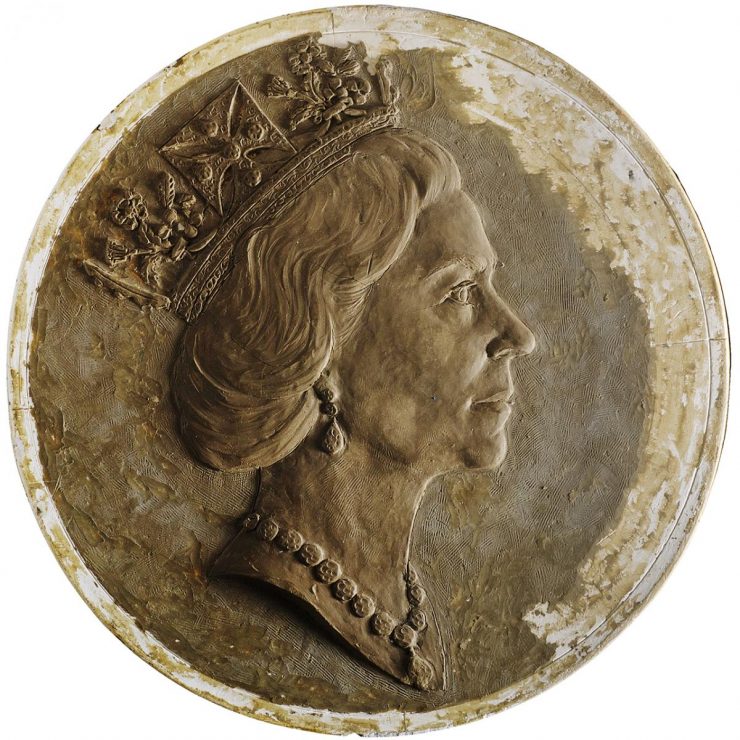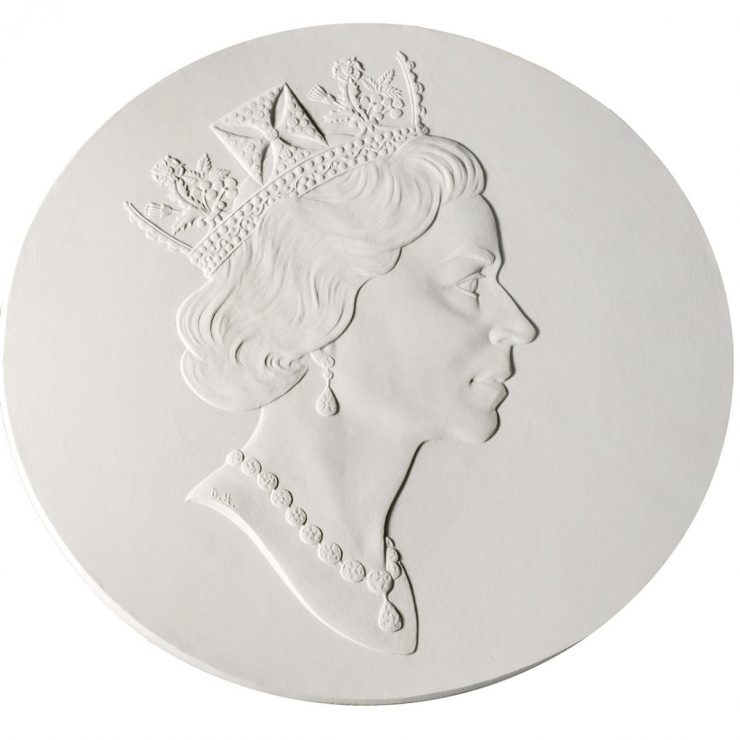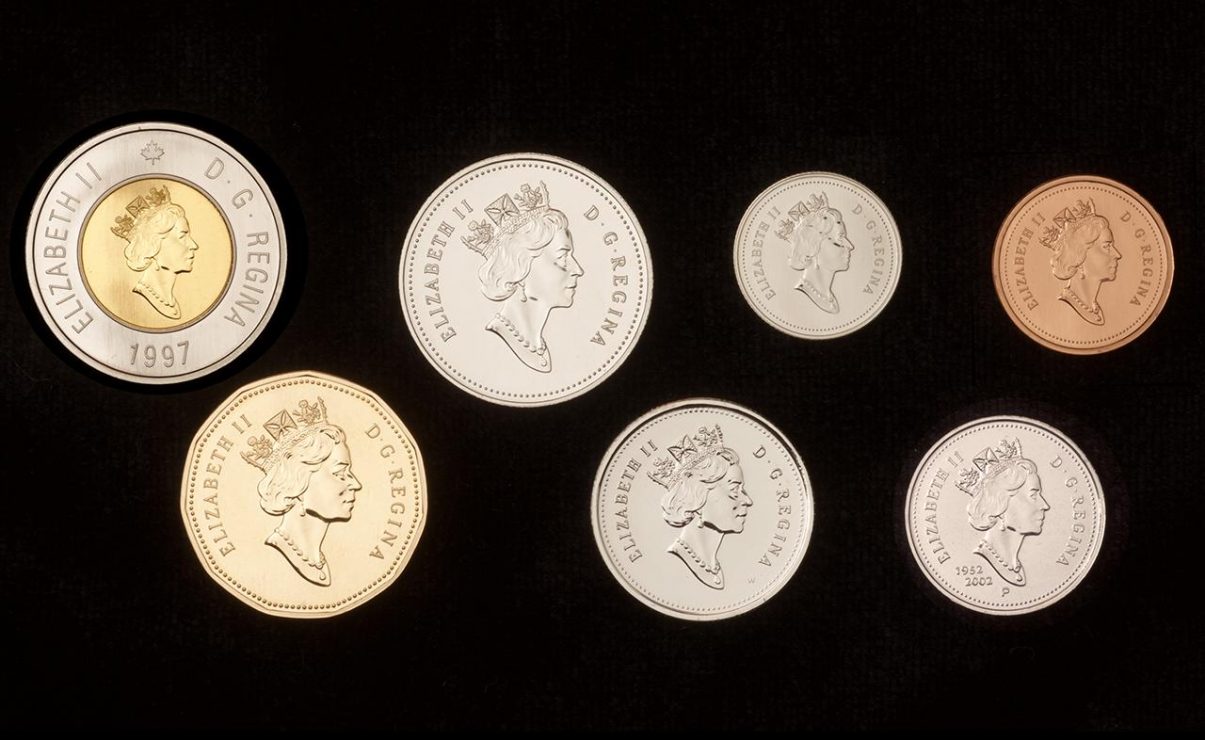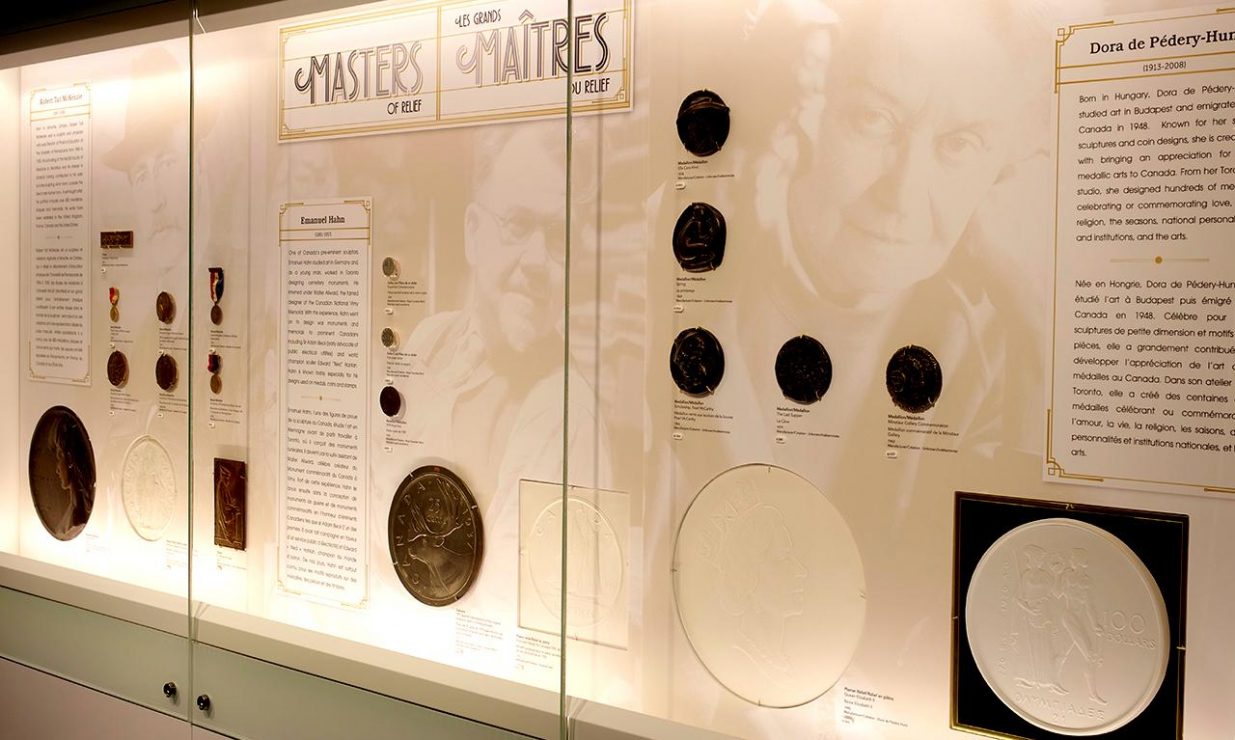Sculptor Dora de Pédery-Hunt
You will not see Dora de Pédery-Hunt’s signature on any coin, but you will see her initials on the Queen’s shoulder.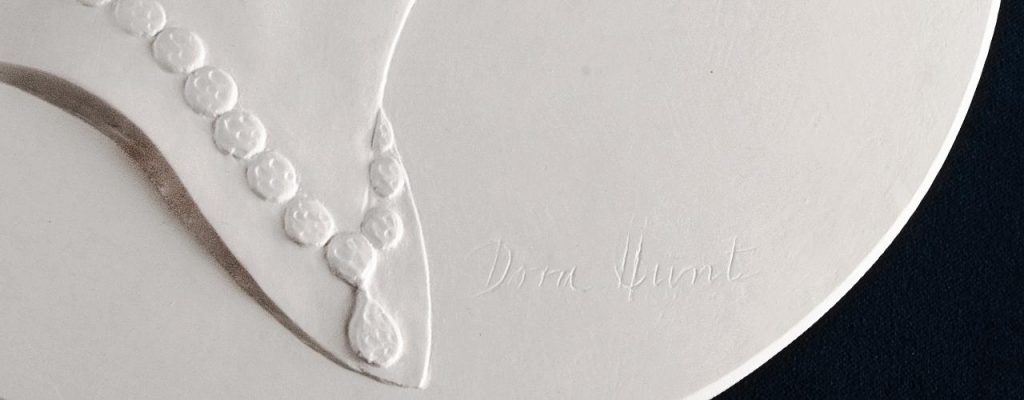
Limited Edition plaster reproduction of working model, #21 of 275. (NCC 2009.020.003)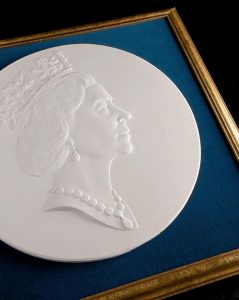
Dora de Pédery-Hunt’s work is as familiar as the change that jingles in your pocket. In all likelihood, you have come in contact with her work while using coins to pay for your morning cup of coffee. Dora de Pédery-Hunt was the first Canadian artist to design and sculpt an effigy of Queen Elizabeth II for coinage. Incidentally, this was the first time someone other than a British citizen had designed an official depiction of Queen Elizabeth II for this purpose.
When the Royal Canadian Mint (RCM) selected Dora’s design, she painstakingly began working on a clay model. All of the details had to be carefully considered, as the depth of the relief had to be suitable for producing coins. This model was then captured in plaster, where additional refinements could be made. Any errors could easily be corrected at this stage with the addition of more plaster. The size of the plaster is usually several times larger than the actual coin in order to capture all of the fine details.
At the time, there were many steps between the plaster model and the production of coins. Today, the process has been significantly refined. The plaster model is scanned in 3D and any final corrections or enhancements can be made digitally. Guided by this digital file, an engraving machine cuts the design into a piece of steel at the correct size of the coin. Known as a reduction punch, this piece of steel is then used to make the dies which will actually strike the coins. The tremendous pressure used to strike the coins wears down the dies, so the mint will periodically use the punch to create new dies.
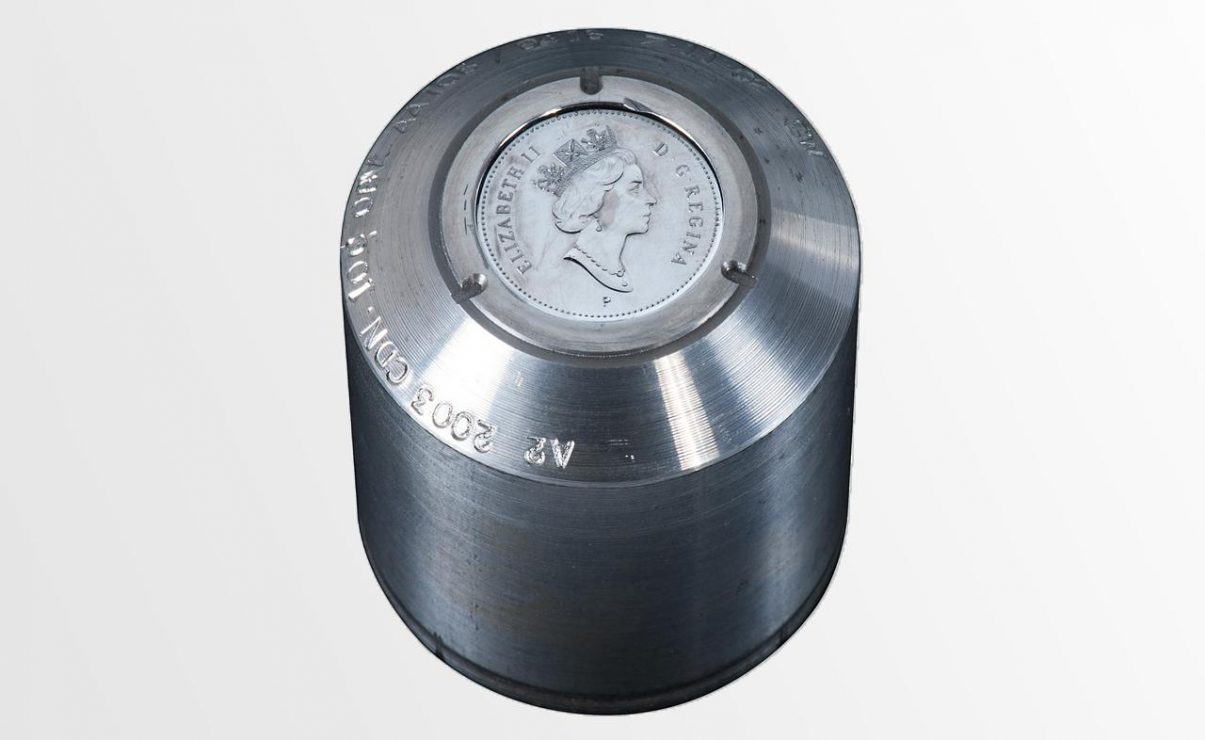
In 1999, the “P”, under the portrait on this punch, was added by the RCM to indicate a change in metal from nickel to multi-ply plated steel. (NCC 2010.058.006)
This portrait has appeared on all Canadian coins minted between 1990 and 2003.
The Museum Blog
A mythic metal: Some stories of gold coins
By: Krista Broeckx
In 1896, three enterprising men struck gold in the Klondike region of the Yukon. Their story is just one of many that illustrates the allure of gold through the ages.
Virtual Worlds. Real Economies.
By: Adam Young
The economies in modern, complex video games can teach gamers a lot about decision making and financial literacy.
Fur Trade Economics
Over its 350-year lifespan, the Hudson’s Bay Company has had an enormous impact on Canada’s economy and how the nation was settled.
The house the Bank of Canada built
By: Graham Iddon
The Bank of Canada head office is two structures: the stone cube on Wellington Street and the glass structure that it is nestled into. Both are significant architectural landmarks.
Value is in the Eye of the Consumer
By: Graham Iddon
Supply and demand is part of the very bedrock of an economy. It's what generates the price of any product or service.
Mishap on the dollar
By: Graham Iddon
An image of a river of logs floating behind Parliament Hill has long lived in Canadian collective memory thanks to a bank note, the Scenes of Canada $1 bill.
The Last Smokestack
By: Graham Iddon
Putting an industrial facility on a bank note is not a casual decision. At the end of the 1960s, such places were earning a bad reputation for pollution. There was actually a good reason for this choice, but it wasn’t obvious to many Canadians.
